Music is the universal language
“Glory to God in the highest heaven, and on earth peace to those on whom his favor rests.” - Luke 2:14
Norse Guitar Feeds
Judas Priest’s Richie Faulkner works “three times a day” with a physio on the road to manage the damage caused by an aortic aneurysm and stroke in 2021

Judas Priest guitarist Richie Faulkner has issued an update regarding his health and how he deals with it on the road, after suffering both an aortic aneurysm and a stroke in recent years.
In an interview with Albany, New York radio station Q105.7, Faulkner is asked about his routine to prepare for Priest shows these days, in the wake of his recent serious health issues.
“Fortunately, I don’t have to do anything too heavy,” he says [via Blabbermouth]. Luckily, I just have to remember to take my meds, which I’ve forgotten this morning. Thanks for reminding me! That’s sometimes the hardest thing.”
He goes on: “I’ve had a bit of collateral damage on my right side with stuff connected to what happened. So I have to work at that.
“We have a physio on the road, and I work with him three times a day: once in the morning – after these interviews, I’m gonna work with him on coordination – before the show and then after the show as well. We do that three times a day. So that sort of stuff I have to work on.
“But as far as the heart and everything’s concerned, it’s meds. I can’t eat too many leafy greens, which I’m not too bothered about. I got lucky, really. There’s a lot of people around the world with a lot more serious conditions than I have. So I consider myself lucky to be here talking to you.”
Richie Faulkner suffered an aortic aneurysm while performing onstage with Judas Priest at Louder Than Life festival in 2021. He was subsequently rushed to hospital and underwent a 10-hour heart surgery.
“My aorta ruptured and started to spill blood into my chest cavity,” he said at the time. “From what I’ve been told by my surgeon, people with this don’t usually make it to the hospital alive.”
Earlier this year, he revealed how he had also suffered a stroke shortly after the incident. “They found some damage on the left side of the brain, which affects the right side,” he explained. “Now, fortunately I don’t play guitar with my foot, so that’s fine, I can get away with that. But my hand, obviously, that’s our engine room. Everything started clicking into place in regards to what I was feeling on stage. There was something that was wrong.”
For the time being, though, Faulkner is determined not to step back from his duties in Judas Priest.
“I still play, we’re still writing records, we’re still playing as hard as we can – it doesn’t affect that – but there’s just little things I have to do,” he said. “But I go out every night thinking… Sometimes I come off stage and I call home and I say, ‘I can’t fucking do it. I can’t do it. I can’t do it.’”
View a list of Judas Priest’s upcoming tour dates via their official website.
The post Judas Priest’s Richie Faulkner works “three times a day” with a physio on the road to manage the damage caused by an aortic aneurysm and stroke in 2021 appeared first on Guitar.com | All Things Guitar.
Loog is branching out to larger-sized instruments for adults and teens

After partnering with Fender and Gibson – the two biggest guitar makers in the world – on two lines of kid-friendly three-string guitars, Loog is branching out to fuller-sized instruments for both adults and teens.
The Pro 6 arrives after parents expressed a longing for such kid-friendly guitars when they were younger, according to Loog CEO Rafael Atijas.
- READ MORE: Fender expands its Hammertone pedal line with two new offerings: the Breakup Drive and Boost
Available as a six-string in both acoustic and electric configurations, the Loog Pro 6 sports an ergonomic body with a super-light build, and contours designed for “effortless handling”. There’s also an all-wood construction with a smooth maple neck for an authentic feel and resonant tone.
 Credit: Loog
Credit: Loog
In terms of pricing and availability, the Loog Pro 6 nylon acoustic is priced at $169, and comes in black, natural, white, pink and green, while the electric version costs $249 and comes in red, black and green.
“As parents discovered Loog over the years, we often heard them say, ‘I wish this existed when I was a kid!’” says Rafael Atijas, CEO of Loog.
 Credit: Loog
Credit: Loog
“With the new Pro 6 guitars, we did something about it. They keep the same beginner-friendly spirit Loog is known for, while also feeling perfectly at home in the hands of an adult picking up the instrument for the first time.”
The Loog Pro 6 is available now via Amazon and direct from the Loog website.
The post Loog is branching out to larger-sized instruments for adults and teens appeared first on Guitar.com | All Things Guitar.
How to Create a Solo Using Scale Notes and Chord Shapes
“I’ll have Frankenstein and my wife, and we’re good”: Wolfgang Van Halen admits he kept his father’s most iconic guitar in the back of his car for three weeks in case they had to evacuate during the LA wildfires

Earlier this year, Los Angeles experienced one of the most destructive wildfire seasons in recent memory. Entire neighborhoods were threatened, parts of Sunset Boulevard were left in ruins, and musicians like Joe Bonamassa scrambled to protect prized collections of rare instruments.
For Wolfgang Van Halen, the danger hit just as close to home – so much so that he spent three weeks with his late father’s iconic Frankenstein guitar in the backseat, ready to grab at a moment’s notice if evacuation orders came down.
Speaking with Premier Guitar, Wolfgang shares how the natural disaster coincided with the making of The End, Mammoth’s third album set for release later this month. The looming threat of fire wasn’t just a source of anxiety, but a daily reminder of what could be lost – the irreplaceable gear housed at Eddie Van Halen’s famed 5150 studio.
To make sure nothing was left to chance, Wolfgang says Frankenstein never left his side, stashed safely in his car during the height of the fires.
“I thought, I’ll have Frankenstein and my wife, and we’re good,” he recalls. “And then we had a U-Haul filled with whatever else we felt was worth saving, which was very tough. Luckily, it didn’t come to that, but it was a traumatising time we’re still working through.”
That tension, understandably, seeped into The End.
“That’s where most of the anxious, doomsday energy in the lyrics comes from,” says Wolfgang. “I couldn’t focus on my things.”
Even so, the album marks a step forward for Wolfgang as a guitarist stepping further into his own identity.: “In comparison to how I was on the first album, which was very reserved, guitar-wise, I’m starting to worry less about what people think and what people say,” he explains. “[The End] has a rawer vibe, and I was happy to keep the rough edges for people to feel like they’re in the studio with me.”
“There are a lot of expectations around me — so many preconceived ideas that it feels impossible for anyone to have a neutral opinion,” Wolfang continues. “From the beginning, I’ve tried to stand out as my own person, without all of the bullshit that comes with the name and the controversies and everything that’s come before me. It’s just nice to be able to be judged for the music itself, rather than what people think or say about me.”
Arriving on 24 October, The End is now available for pre-order. Check out the latest single below.
The post “I’ll have Frankenstein and my wife, and we’re good”: Wolfgang Van Halen admits he kept his father’s most iconic guitar in the back of his car for three weeks in case they had to evacuate during the LA wildfires appeared first on Guitar.com | All Things Guitar.
“I was in a dark place with Bruce leaving and me going through a divorce”: Steve Harris on why this underrated Iron Maiden album was so “powerful”

Personal upheaval may have been painful for Steve Harris, but it also gave rise to what he believes are Iron Maiden’s most “powerful” unsung albums.
Looking back on the band’ discography, the Maiden leader highlights 1995’s The X Factor and 1998’s Virtual XI – both made during the hiatus of their lead singer, Bruce Dickinson – as two records that fans are only now beginning to ‘realise they’re good’.
“I said it at the time and I still believe it – those two are really strong, powerful albums and people will appreciate them later,” he tells Metal Hammer. “And people are going back and discovering them and realising they’re good.”
“The X Factor in particular is really good,” says Harris, “but it’s a dark album.”
“Probably ‘cos I was in a bit of a dark place with Bruce leaving and me going through a divorce at the time, all this stuff going on. But what came out of that was a powerful album. You take negative stuff and you turn it into a positive and those emotions come out, and that’s what you can do with music. Music’s such a powerful thing.”
Even with multiple multimillion-selling records, Harris admits the band has never produced a “perfect album.”
“I don’t think we’ve ever made the perfect album. Number Of The Beast, people think that’s the perfect album, but there are two songs on there that are not as good as the others,” he says, referring to Invaders and Gangland. “Not everything’s going to be good, is it?”
Asked if he’d ever considered calling it quits, Harris laughs, “Only for a couple of hours. It’s like when West Ham lose – I sulk for two hours, but you have to pick yourself up, brush yourself down and get on with it. It’s the only way it’s going to work.”
The post “I was in a dark place with Bruce leaving and me going through a divorce”: Steve Harris on why this underrated Iron Maiden album was so “powerful” appeared first on Guitar.com | All Things Guitar.
Fender expands its Hammertone pedal line with two new offerings: the Breakup Drive and Boost

Fender has expanded its Hammertone line of effects pedals with two new units: the Hammertone Breakup Drive and Hammertone Boost.
The Big F’s Hammertone line is positioned to offer guitarists “the essential building blocks of any pedalboard”, comprising – including the new Hammertone Breakup Drive and Hammertone Boost – 11 pedals in total.
Other pedals in the Hammertone range include the Delay, Metal (distortion), Space Delay, Flanger, Reverb, Fuzz, Overdrive, Distortion and Chorus.
But let’s take a look at what the new installments have to offer…
Hammertone Breakup Drive ($99.99 / £75.99 / €89.99)
 Credit: Fender
Credit: Fender
Providing guitarists responsive, tube-like tones in a compact pedal format, the Hammertone Breakup Drive is built around a JFET-based circuit, and replicates the dynamic feel of hot tubes pushed to the edge of saturation.
There are two selectable clipping modes – which range from light breakup to low-gain overdrive – as well as an “expansive” tone control and switchable pre-gain mid boost for flexible frequency shaping.
“Whether adding character to a clean tone or delivering touch-sensitive overdrive, the Hammertone Breakup Drive offers versatile performance for players who crave feel and nuance,” says Fender.
Hammertone Boost ($99.99 / £75.99 / €89.99)
 Credit: Fender
Credit: Fender
Meanwhile, the new Hammertone Boost offers two distinct boost circuits in a single enclosure, with a Type switch selecting between a clean, op amp-based boost, or a JFET-based boost that adds “warmth and harmonic richness, reminiscent of vintage tape unit preamps”.
There’s also an onboard EQ section, with Treble and Bass controls allowing easy tone shaping.
“Whether used to cleanly boost solos, push an amp into breakup, or add subtle sweetness to a core tone, the Hammertone Boost delivers exceptional flexibility and performance,” Fender says.
Learn more about the latest Hammertone additions at Fender.
The post Fender expands its Hammertone pedal line with two new offerings: the Breakup Drive and Boost appeared first on Guitar.com | All Things Guitar.
John Fogerty thought effects pedals were a “communist idea” and didn’t want to use them

John Fogerty has admitted to being skeptical about effects pedals during his Creedence Clearwater Revival days, even going so far as to call them a “communist idea.”
In a recent interview with Rick Beato, the CCR guitar legend says that back in the ’60s, he “didn’t know anything about pedals”, nor did he have any desire to use them.
“It’s one of those weird things in life,” says Fogerty. “You notice – especially culturally or politically – people will change their mind about some subject. At first they are one way and then with some education or whatever they are like ‘oh’. I was kind of that way about pedals. ‘Why do I need a pedal?’ It seemed like some communist idea or something.”
Instead, Fogerty gravitated to Kustom amps, which he describes as having “some hair on the notes”.
“The amp I used a lot almost exclusively in those days was the brand Kustom. Basically it was solid state but they had created this amp in such a way that it [has a] natural sound,” he explains. “If you turned it up pretty loud – it was a 100 Watter amp – it didn’t have that horrible, tight, too clean sound that so many of the solid state amps were into.”
Paired with his Rickenbacker, the Kustom amps gave Fogerty the exact tone he wanted.
“I always felt that a Blackface or the Silverface Fender – the Twin Reverb, the big amp, I thought was too harsh for me. I still do,” says the guitarist. “The Kustom amp kind of had some hair on the notes – and it was perfect for strumming an electric guitar, especially a Rickenbacker. The toaster pickups on that guitar weren’t real, real loud, so that the amp had some finesse to it.”
“That combination was perfect, the Rick with the Kustom amp,” he concludes.
The post John Fogerty thought effects pedals were a “communist idea” and didn’t want to use them appeared first on Guitar.com | All Things Guitar.
Nuno Bettencourt launches guitar brand, Nuno Guitars, ending 35-year run with Washburn

Extreme’s Nuno Bettencourt has launched his own guitar company, Nuno Guitars, bringing an end to over three decades of partnership with Washburn.
Announcing the launch in a new Instagram video, Bettencourt says: “I’m super excited to announce that today, this second, right now as we speak in real-time, I’m launching my own guitar company.”
“Had a great run with Washburn, a good 35 years, I believe, which is pretty insane.”
The guitarist explains that the decision has been years in the works, motivated by a wish to engage more closely with the guitar-playing community.
“One of the main reasons is I wanted to be able to kind of deal directly with y’all, with guitar players and fans that purchase any of my guitars,” he says. “I wanted to kind of build this community now and be able to engage with you on a deeper and a closer level.”
Bettencourt’s first flagship models under the new brand, the Dark Horse and White Stallion, spearhead the launch. They are joined by the N4, his long-standing signature model with Washburn.
 Credit: Nuno Guitars
Credit: Nuno Guitars
The new venture lets players get their hands on the same instruments the guitarist himself uses, from stage performances at Black Sabbath’s Back to the Beginning benefit at Villa Park in Birmingham to his 2025 MTV VMA appearances.
“These are true workhorses built with the same passion I’ve put into every note I’ve ever played,” says Bettencourt. “What I’m most excited about as the founder and CEO of my new company is communicating directly with players and fans who will get to play the exact guitars that I play on stage and in the studio.”
He adds, “Together we’re forming a new community where I can personally engage with you about a mutual passion… our guitars. Once you own a Nuno guitar, you are forever a part of my family. Let’s Ride!”
Learn more at Nuno Guitars.
The post Nuno Bettencourt launches guitar brand, Nuno Guitars, ending 35-year run with Washburn appeared first on Guitar.com | All Things Guitar.
Boss RT-2 Rotary Ensemble review – a compact Leslie sim that doesn’t compromise on features

$239/£229, boss.info
Different modulation effects seem to come in and out of fashion – it’s flanging this week, hadn’t you heard? – but the rotary speaker sound is different. The ‘Leslie effect’ is older than rock music itself, and it’s just too beautiful to worry about its position in the guitar stompbox pantheon.
- READ MORE: EarthQuaker Devices Easy Listening review – can an amp simulator this simple actually sound good?
Two things have changed in recent years, though: the power of digital processing has made it much easier to simulate the sound of a Leslie cabinet, and guitarists are demanding smaller pedals so they can fit more of them on their ‘boards. Toss all of that information into a cauldron, add the biggest brand name in pedaldom, and what comes out is the Boss RT-2 Rotary Ensemble.
 Image: Adam Gasson
Image: Adam Gasson
Boss RT-2 Rotary Ensemble – what is it?
If I say it’s a compact Leslie sim, you might be ready to move on to the next section already. But please don’t – it took me ages to write this bit. It’s a story that takes us all the way back to the 1930s: designed for organs rather than guitars, the original Leslie cab used spinning drivers (well, strictly speaking one spinning driver and one spinning baffle) to create an intense and distinctive kind of modulation based on the Doppler effect. It soon became a key component of the Hammond sound.
A number of guitarists started using Leslies in the 60s; but while compact phaser, flanger and chorus pedals were all over the stages of the 80s, it seems the rotary effect’s multi-dimensional wobble was just too complex to be miniaturised in the same way using analogue tech. The H&K Tube Rotosphere had a good go in the late 90s – and remains a hugely respected pedal to this day – but it was a whopper, as were early digital efforts like the Korg G4.
Then came Neo Instruments. This German company has been making Leslie sims since 2010, most notably the not-quite-compact Mini Vent (launched in 2013) and a pair of very-much-compact Micro Vent models (2019). All the Vents share one important design feature: they sound frickin’ fantastic. And that’s the bar that the RT-2 is aiming to clear.
This is not Boss’s first rotary pedal – there was a much bigger version, the RT-20, in the now-discontinued 20 series. But that unit had two footswitches, seven knobs and a four-way mode switch. How much of that has survived the transition to the classic single-stomp format? Well, as it turns out, pretty much all the important bits.
Ramping between fast and slow speeds is a major part of the Leslie recipe; in the absence of a second footswitch, it’s done here by holding the bypass switch down for a second. Those two speeds are set via concentric knobs on the right, while another pair on the left handle output level and overdrive. A couple of switches round the back let you choose your ramping time (fast or slow) and repurpose the drive knob to alter the balance between the two virtual drivers (a low-frequency drum and a high-frequency horn).
There’s just a three-way mode switch this time, and stereo ins and outs plus an expression pedal input for controlling the speed manually… oh, and a simplified version of the RT-20’s kerrr-azy light show for giving a visual representation of the two spinning speakers.
 Image: Adam Gasson
Image: Adam Gasson
Boss RT-2 Rotary Ensemble – is it easy to use?
As long as you’ve got at least one working ankle, getting started with the RT-2 is stupendously simple. Tap once to turn it on, tap once to turn it off, hold until the status LED changes colour to set it off a-ramping; as a system, it’s impossible to forget and (nearly) impossible to get wrong. The pedal even comes with a battery fitted, although – as ever with digital pedals – you’re better off with an external power supply.
The controls are self-explanatory, with no quirks or surprises. And while the red and blue lights don’t really do anything vitally important, they do provide a visual representation of the imaginary drivers’ rotation (blue for the drum, red for the horn) that’s weirdly compelling. You’d definitely miss them if they stopped working.
 Image: Adam Gasson
Image: Adam Gasson
Boss RT-2 Rotary Ensemble – what does it sound like?
If you stand in front of a speaker cabinet containing two drivers with their output spinning in opposite directions, you’re going to hear a lot of modulation – a combination of chorus, phasing and tremolo that’s somehow richer than any of them but in a way that isn’t overwhelming. That’s the unique sorcery of the Leslie sound, and the RT-2 does it… reasonably well.
There’s no mistaking that this is a rotary sim, and Boss has captured every element of the sound – including the way the two rotors accelerate and decelerate at different speeds in the transitions. It swirls around sinuously in slow mode, and wibbles delicately in fast mode. Run it through two amps and you get a decent stereo spread that adds a whole load of immersive realism. In short, it does the job.
What it doesn’t do is sound unconditionally gorgeous. It’s nice enough, but sometimes the voicing of the RT-2 seems a little overbearing in the midrange – maybe a blend control would have helped? – while the effect can get woozy at slower speeds, perhaps because of a tad too much emphasis on the tremolo element. Just to be clear, it’s good… but the competition is better.
The first two modes are strangely similar, but the third shakes things up tonally and also adds a big dollop of gain. This is really noticeable when you crank the drive control, which should in theory produce a wonderfully chewy grinding effect but, in the RT-2’s case, somehow doesn’t. It sounds ever so slightly fizzy and detached. Again, it’s not bad, it’s just not very likeable.
 Image: Adam Gasson
Image: Adam Gasson
Boss RT-2 Rotary Ensemble – should I buy it?
If you want a proper speed-ramping Leslie sim and it has to be compact, your choice is between this and one of the Neo Micro Vents – which sound better, but lose out on flexibility (mono outputs, no overdrive) and pricing. Prepared to give up a couple more square inches of pedalboard space for something with two footswitches? Now the Boss is going up against a much bigger field that includes the Mini Vent, the Strymon Lex and more… and it suddenly becomes a lot harder to recommend.
Boss RT-2 Rotary Ensemble alternatives
Those Neo Micro Vents (€359/£299) come in black and white flavours, representing the Leslie 122 and 16 respectively. The Strymon Lex ($349/£329) is great for overdriven sounds, but see also the Keeley Rotary ($229/£289) and Electro-Harmonix Lester K ($218/£163).
The post Boss RT-2 Rotary Ensemble review – a compact Leslie sim that doesn’t compromise on features appeared first on Guitar.com | All Things Guitar.
Bass Rigs From IK Multimedia
What's New: September 30, 2025
Orangewood Clementine: Not Your Average Semi-Hollow! | PG Plays
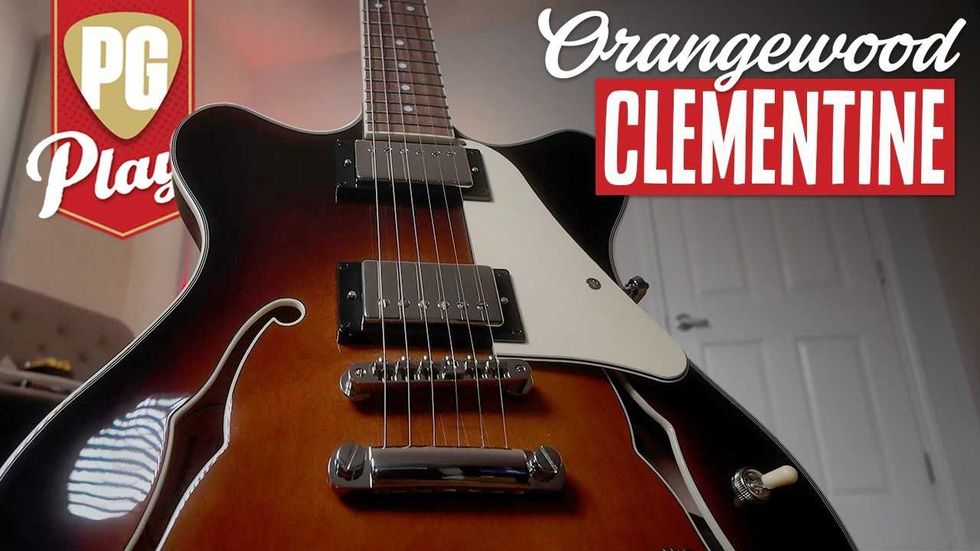
PG contributor Tom Butwin introduces the Clementine from @orangewoodguitars, a semi-hollow guitar that blends classic style with modern functionality. It features a unique belly carve and a satin-finished mahogany neck for enhanced comfort and playability. Equipped with Seymour Duncan Seth Lover humbuckers and a coil split, the Clementine delivers a range of versatile tones. It also includes practical features like an accessible electronics panel and Grover Roto-Grip locking tuners, making it a reliable and easy-to-maintain instrument.
Shop the Clementine in three colors: https://orangewoodguitars.com/pages/c...
Fortin Kali Review
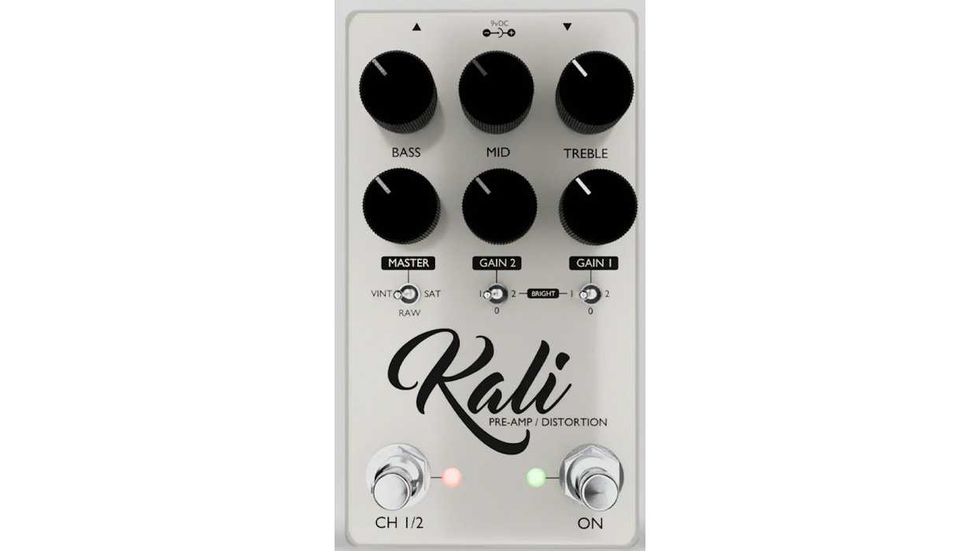
The aptly named Kali distills elements of the Fortin Cali—a Plexi-inspired amp—into a 2-channel pre-amp and distortion pedal. Each channel has three gain modes—vintage, raw, and saturation—which are selectable via a mini toggle. And each mode has a very distinct vibe, which could be loosely categorized as low-end-heavy, midrangey, and high-gain-centric, respectively.
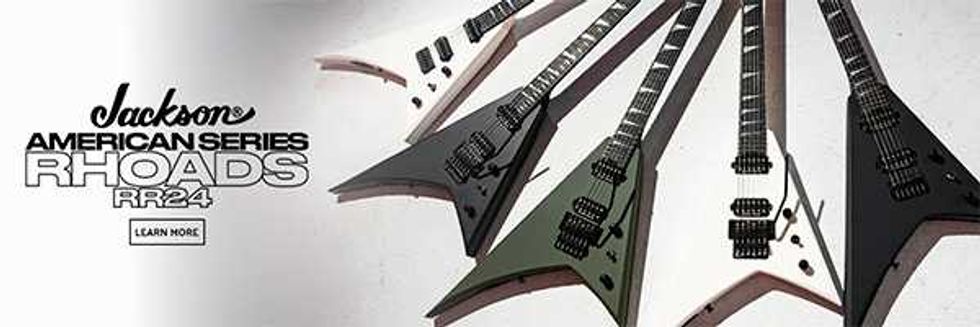
Jimmy Herring: ARU, Panic, and Beyond | 100 Guitarists Podcast
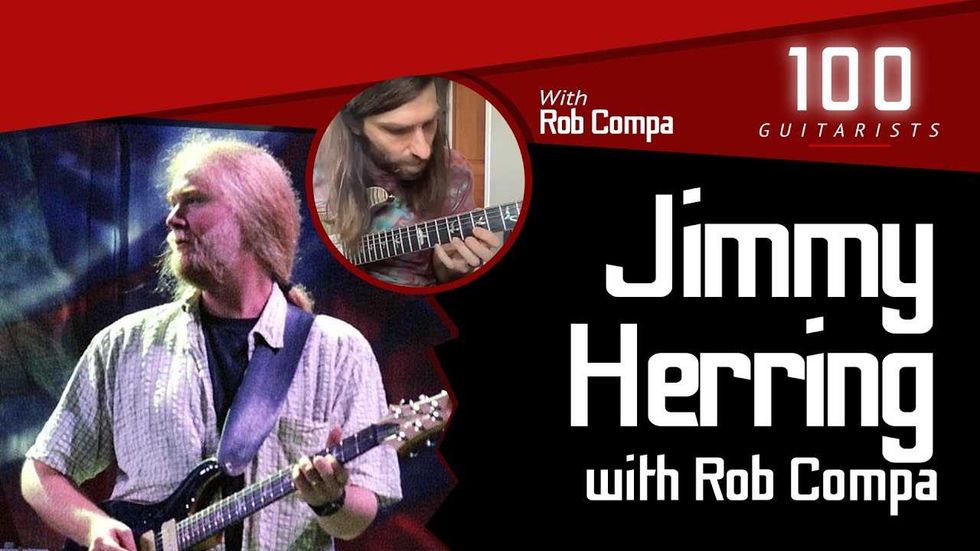
This week, hosts Nick Millevoi and the shamelessly biased Jason Shadrick dive deep—much, much deeper than Nick ever imagined he would go—into the vast discography of the great Jimmy Herring. They enlist Rob Compa, formerly of Dopapod and now of Neighbor, whose greatest qualification is living in Burlington, Vermont, "the hub of all things jam bands".
Sowing in the Storm with "Ecstatic Black Metal" Band Agriculture
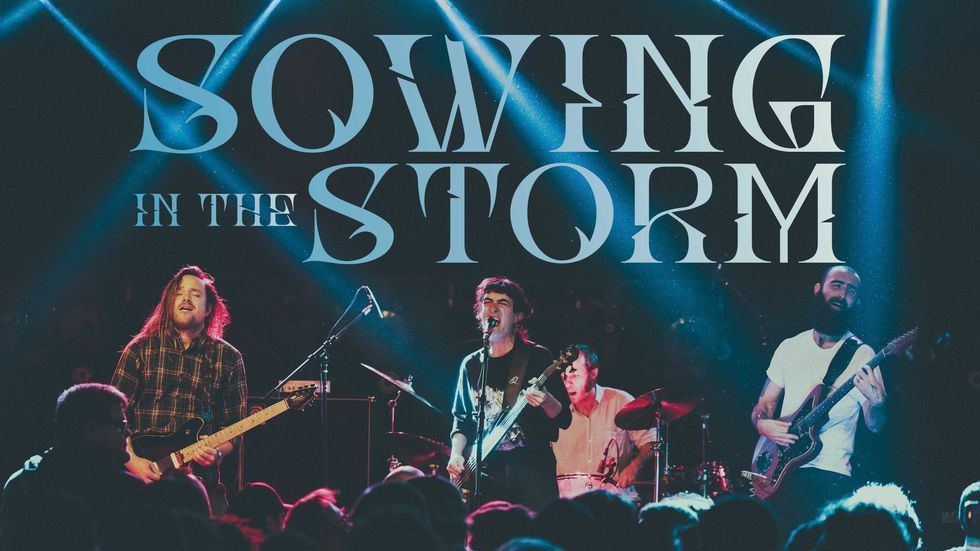
Los Angeles experimental metal band Agriculture’s new record, The Spiritual Sound, might not make sense to you at first listen. When the band sent the album to their friends, many of them were overwhelmed, if not weirded out. The band members weren’t surprised. “If I heard this record for the first time, I’d be pretty confused by it,” says guitarist and vocalist Dan Meyer.
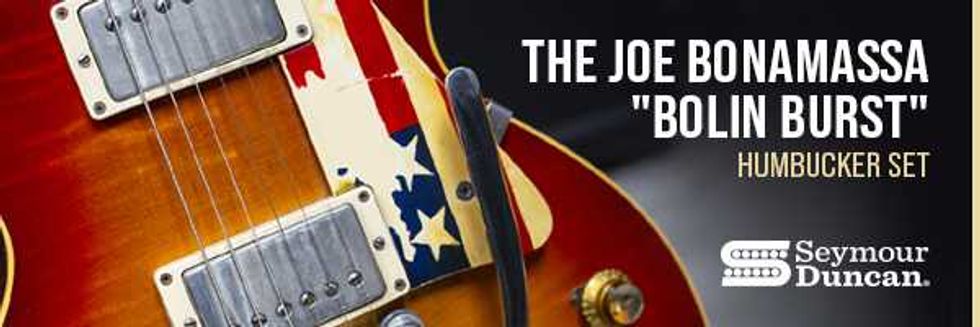
Gear Finds: Pickups and Guitar Upgrades
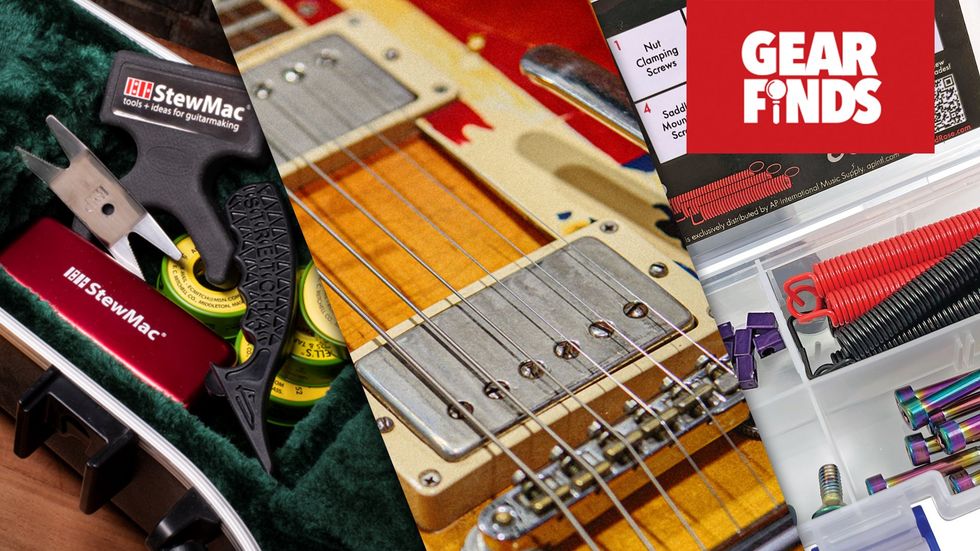
Unlock your guitar's true potential with the Fralin Pickups Push-Pull Blender Pot! Blend tones, split coils, and explore endless sonic possibilities without permanent changes. Ready to elevate your sound? Check out the Joe Bonamassa Humbucker Set and more gear to keep your music alive!
Check Out This Pristine 1959 Les Paul Custom
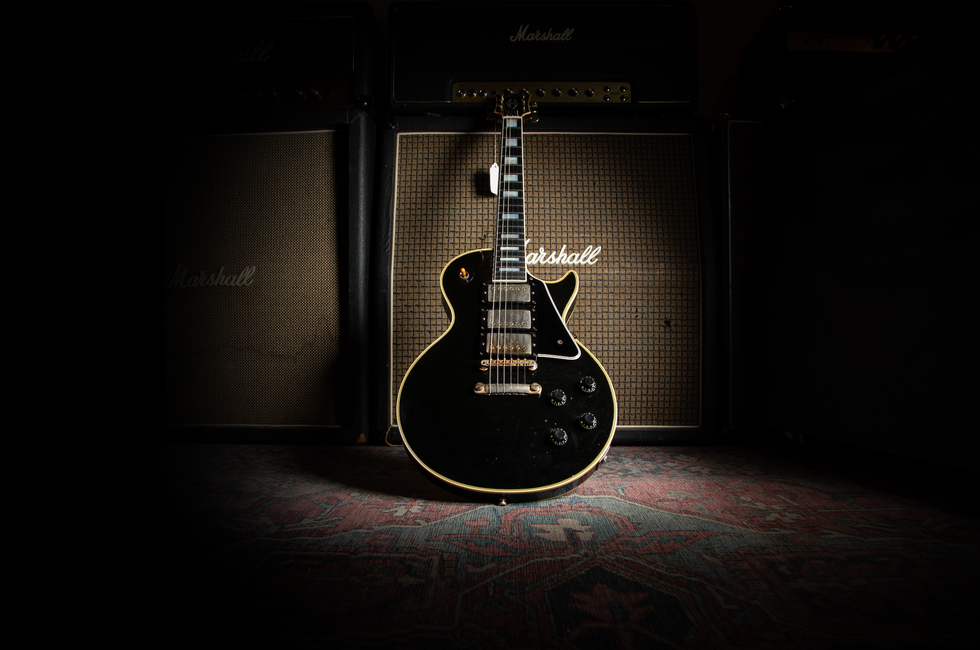
It’s been a minute since we’ve gotten to share something truly special with you all, and today’s subject is one of the finest: a 1959 Gibson Les Paul Custom.
Gibson introduced the first Les Paul Customs in late 1953, following a couple of prototypes built for Les Paul a year earlier. Les wanted what he called a “more elegant” version of the Les Paul Standard, something that looked sharp on the booming new medium of television. His request was specific: a black guitar with refined appointments and design tweaks to match his playing style.
Latest News
Fender Expands Hammertone Series, Introducing New Boost & Breakup Drive
The Music Education Foundation Announces MusicPro ’26
Seymour Duncan Announces The Joe Bonamassa "Bolin Burst" Humbucker Set
Nuno Bettencourt Launches Own Guitar Company, Nuno Guitars
Crazy Tube Circuits Announces Mirage JR
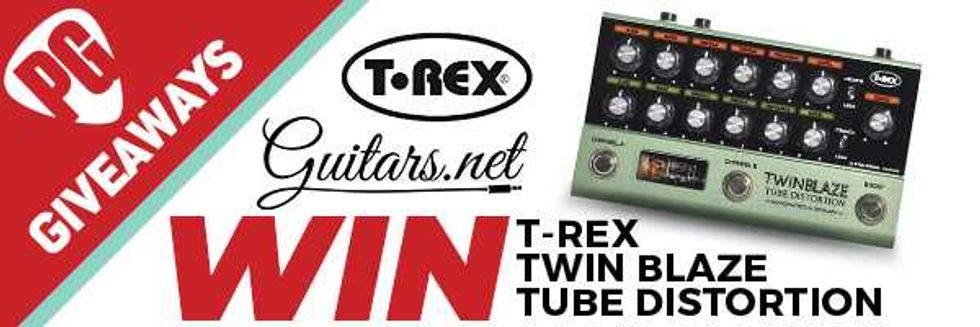
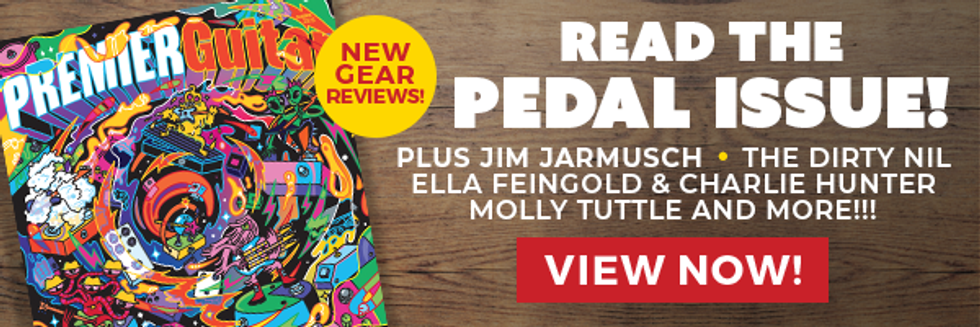
Orangewood Clementine: Not Your Average Semi-Hollow! | PG Plays
PG contributor Tom Butwin introduces the Clementine from @orangewoodguitars, a semi-hollow guitar that blends classic style with modern functionality. It features a unique belly carve and a satin-finished mahogany neck for enhanced comfort and playability. Equipped with Seymour Duncan Seth Lover humbuckers and a coil split, the Clementine delivers a range of versatile tones. It also includes practical features like an accessible electronics panel and Grover Roto-Grip locking tuners, making it a reliable and easy-to-maintain instrument.
Shop the Clementine in three colors: https://orangewoodguitars.com/pages/c...
Fender Expands Hammertone Series, Introducing New Boost & Breakup Drive
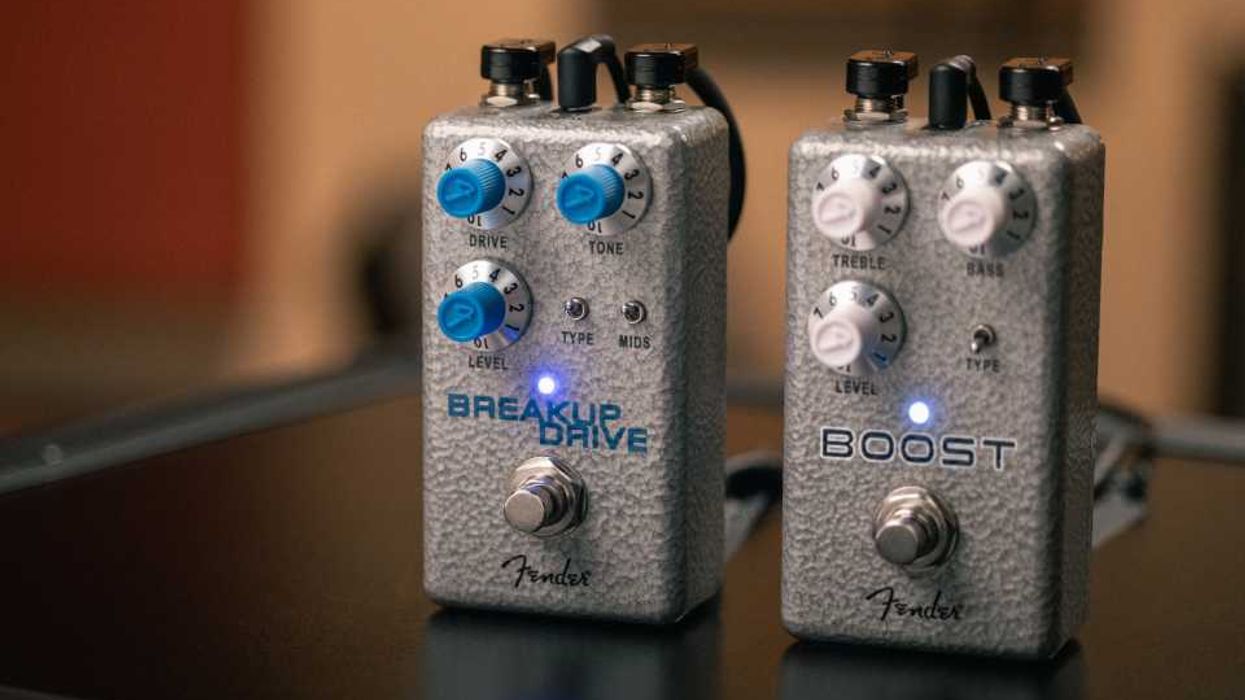
Today, Fender expands its Hammertone pedals series with two brand new pedals – the Hammertone™ Breakup Drive and Hammertone™ Boost. Built to be the essential building blocks of any board, the expansion of the Hammertone™ range offers players even more options to choose from – either used individually or stacked to suit any style and personality.
The brand new Hammertone™Breakup Drive provides responsive, tube-like overdrive tones with two clipping modes, giving players expansive control over their sound, while the Hammertone™Boost offers players the choice of cleanly boosting their solos or adding a warm, harmonic richness to their tone.
Hammertone™ Breakup Drive
($99.99 USD, £75.99 GBP, €89.99 EUR, $159.00 AUD)
The Hammertone™ Breakup Drive delivers responsive, tube-like overdrive tones in a compact, format. Built around a JFET-based circuit, it’s designed to replicate the dynamic feel of hot tubes pushed to the edge of saturation. Two selectable clipping modes let players dial in anything from light breakup to low-gain overdrive, each offering expressive responsiveness that cleans up with lighter picking and intensifies with more aggressive playing. An expansive tone control and a switchable pre-gain mid boost provide flexible frequency shaping to craft the perfect sound. Whether adding character to a clean tone or delivering touch-sensitive overdrive, the Hammertone Breakup Drive offers versatile performance for players who crave feel and nuance.
Hammertone™ Boost
($99.99 USD, £75.99 GBP, €89.99 EU, $159.00 AUD)
The Hammertone™ Boost elevates any rig with two distinct boost circuits housed in a single enclosure. Its Type switch allows players to choose between a clean, op amp-based boost for transparent volume enhancement and a JFET-based boost that adds warmth and harmonic richness, reminiscent of vintage tape unit preamps. With center-detented Treble and Bass controls, the EQ section offers easy access to a completely flat boost or precise tonal shaping—cutting or enhancing frequencies as needed. Whether used to cleanly boost solos, push an amp into breakup, or add subtle sweetness to a core tone, the Hammertone Boost delivers exceptional flexibility and performance.
Fortin Kali Review
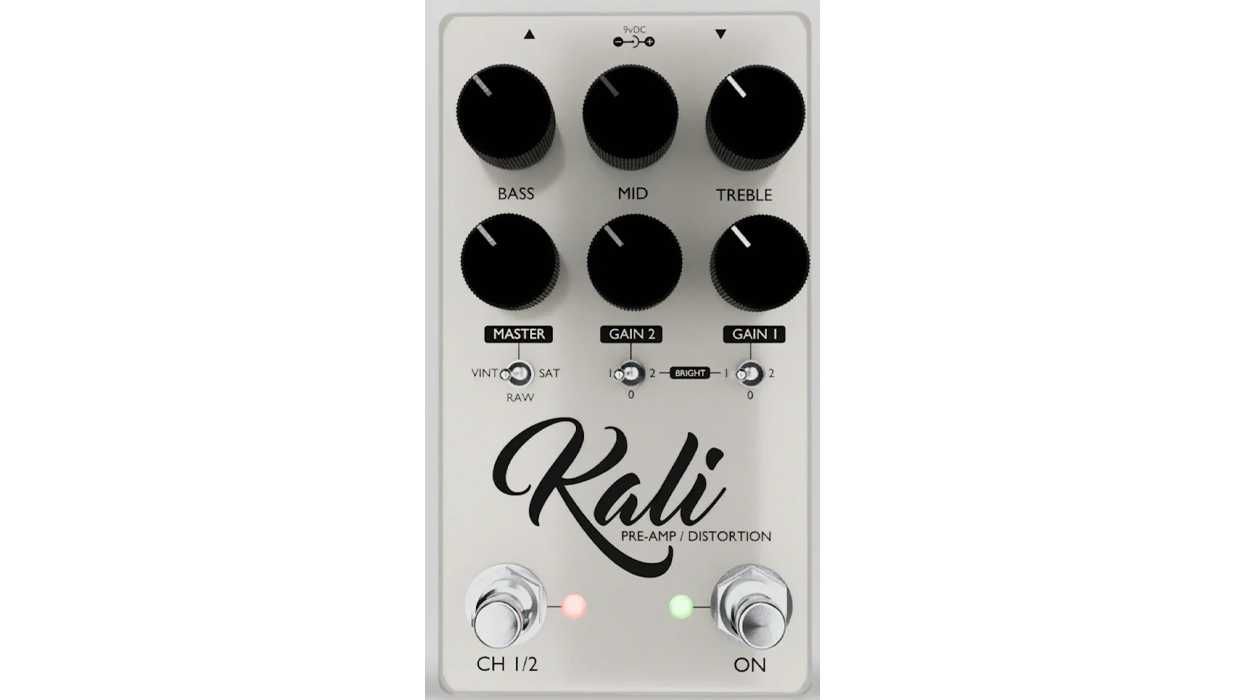
The aptly named Kali distills elements of the Fortin Cali—a Plexi-inspired amp—into a 2-channel pre-amp and distortion pedal. Each channel has three gain modes—vintage, raw, and saturation—which are selectable via a mini toggle. And each mode has a very distinct vibe, which could be loosely categorized as low-end-heavy, midrangey, and high-gain-centric, respectively.
Charging right into Kali’s arms, I selected the vintage mode on Channel 1, and set the gain 2 knob to 9 o’clock. The gain 2 knob, which controls the gain level that hits the circuit’s front end, is the default gain knob for both channels. The gain 1 knob, which adds additional gain stages, only works on channel 2. But even at this modest setting, I was already into toothy distortion that was very touch-sensitive.
Wide Range of Rage
Without changing any other settings, things got significantly filthier by merely switching over to the saturation mode. And even at this lower-gain setting, the output is tailor-made for heavy rhythm in a classic metal jam. Pumping the gain 2 knob to around 3 o’clock, meanwhile, makes the Kali a very in-your-face proposition, with sounds rooted in Sunset Strip/Jose Arredondo Marshall-mod energy.
Interestingly, even though saturation mode has the most aggressive gain structure, it doesn’t feel especially compressed. It’s also the quietest of the three modes when tested across identical settings. This was especially noticeable when I switched between vintage and saturated modes at high gain 2 settings. It follows, then, that raw mode—the pure sound of the pedal without any extra gain stages and essentially the preamp only—is the loudest of the three modes.
Well Put Together, With a Bright Personality
Channel switching is handled by one of the two footswitches (the other
is for bypass) and it enables you to cascade one channel into another. In cascaded-stage mode, gain knob 1 is active and serves as a pre-gain (hence the gain 1 designation). In saturation mode, with both gain knobs at noon, switching between the channels sounds organic. Channel 2 is generally thicker and sustains bends for a tad longer. But the two channels definitely do not feel haphazardly thrown together. They are clearly cut from the same cloth.
“[It’s] a very in-your-face proposition, with sounds rooted in Sunset Strip/Jose Arredondo Marshall-mod energy."
In general, the Kali is bright, but if you need brighter, there are a pair of 3-position bright switches for each of the two channels. At low output volumes the changes offered by these bright switches are noticeable but not too dramatic. They are much more pronounced at high output volume. The active +/- EQ knobs actually have much greater impact on the Kali’s personality—particularly in the zones between 9 and 3 o’clock, where minor tweaks yield very different tonal realms.
The Verdict
The Kali comes across as a cohesive whole, yet its interactive controls and powerful EQ unlock a wide range of Plexi and modded-Plexi tones. No matter how you set it, it sounds impressive.
Podcast 518: Courtney Hartman
Singer-songwriter/guitarist Courtney Hartman joins us again on the podcast to share the story of her forthcoming album, With You. The album – her first since becoming a parent – is a beautiful collection of songs with a unique backstory. To help finish the record, she turned to fellow songwriter moms in her orbit.
It’s a beautiful record and a great talk. Added bonus: We’re streaming her new single “Everything at Once” on our site here. Check it out!
Follow Courtney here.
Our new, 57th issue of the Fretboard Journal is now mailing. Subscribe here to get it.
Our next Fretboard Summit takes place August 20-22, 2026 at the Old Town School of Folk Music in Chicago. https://fretboardsummit.org
We are brought to you by: Stringjoy Strings: https://stringjoy.com
(Use the code FRETBOARD to save 10% off your first order)
Mike & Mike’s Guitar Bar: https://mmguitarbar.com
Peghead Nation: https://www.pegheadnation.com (Get your first month free or $20 off any annual subscription with the promo code FRETBOARD at checkout).
The post Podcast 518: Courtney Hartman first appeared on Fretboard Journal.
Lowden’s AI-equipped guitars can now tell you how they’re feeling – or where they are

In an age where AI in music often sparks debate about creativity, Northern Irish maker Lowden Guitars is taking the technology in a more practical direction. Its latest instruments come fitted with built-in smart sensors designed not to write songs, but to help players better care for their guitars – and maybe even fend off thieves.
Lowden, whose roster of players includes Ed Sheeran, Eric Clapton, and Mark Knopfler, is the first major acoustic builder to embrace AI in this way. The smart sensor tracks a guitar’s “health information” in real time, monitoring temperature, humidity, vibration, and even location.
Owners can then keep tabs on their instrument via the companion app Mylowden. Built in collaboration with Storm Reply, ubloquity, and Amazon Web Services, the app doubles as a digital logbook. It stores data in the cloud, provides access to warranty and insurance services, and offers tips for keeping guitars in peak playing condition.
“I’m very excited to know that this program has been developed in conjunction with AWS in the hope that guitar players will always have the assurance of knowing where their guitar is, and what sort of condition it has been kept in,” says founder George Lowden.
The app also records GPS location, ownership history, and the materials used in each build. Players can even document key events in the life of their guitar – from songwriting sessions to gigs.
“Lowden is the first guitar maker to embrace this type of technology in a way that enables musicians to grow their understanding and connection with their instruments,” says Managing Director Aaron Lowden.
“From practical information about their instrument, including climate, any knocks it could potentially take during travel, and documenting key services or repairs, key moments in playing, songwriting, collaborating, and performing, this technology will enhance the Lowden ownership experience.”
He adds that the technology “is really limitless, and new features will be rolled out over time”.
Learn more at Lowden.
The post Lowden’s AI-equipped guitars can now tell you how they’re feeling – or where they are appeared first on Guitar.com | All Things Guitar.
A Look Inside Montreal’s Guitar-Building Cooperative
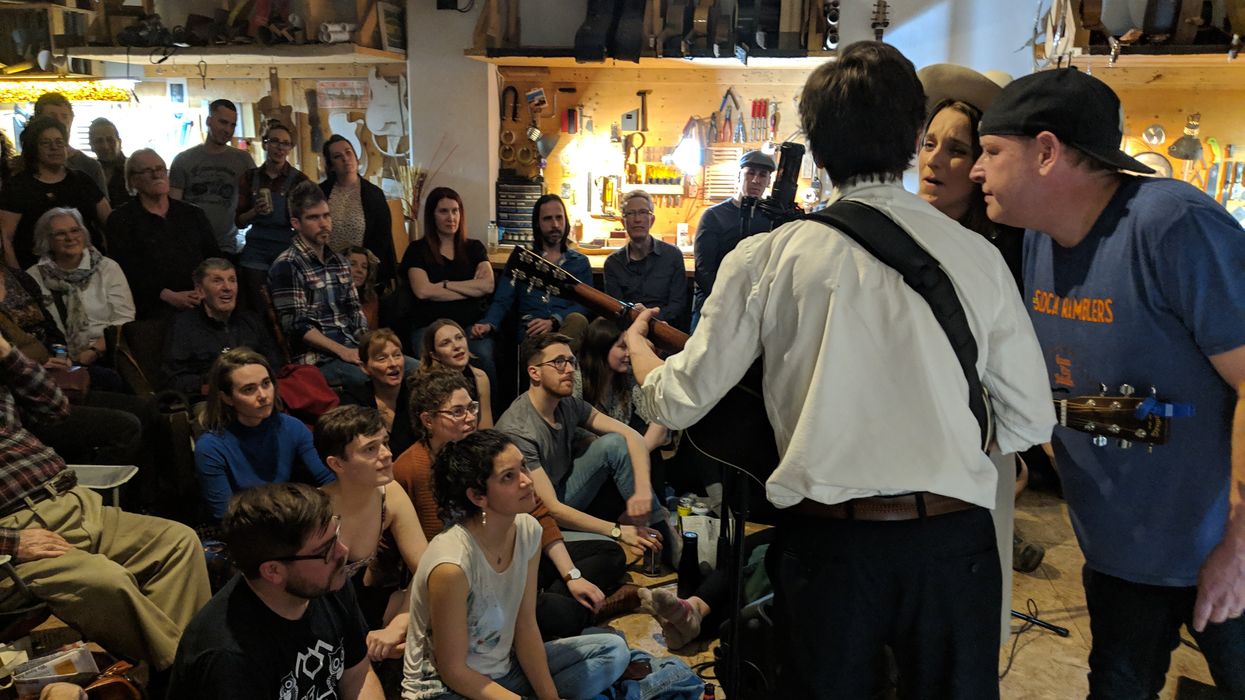
It was 2022. I had just moved across the country from Edmonton, Alberta, to Montreal, Quebec, and I was working a remote tech job that I didn’t like very much. Outside my home office, Montreal was just starting to poke its head out of the Covid lockdowns, and a small taste of its arts and music scene planted a seed in my brain. I had to find something better to do than that tech job.
I stumbled across the Mile End Guitar Coop while searching for guitar stores. But this was clearly something more interesting than just a retail shop; their website explained that this was a cooperative of independent guitar builders.
The first time that people set foot in the shop, they often stop at the door for a moment in awe. That’s exactly what I did. The first thing I noticed was that the shop smelled really good—like wood and coffee. All around were tools, stacks of wood, machines, and guitars in various stages of the building process. I was shown around by Nicholas Brygidyr of NGB Guitars, a former coop member, and Brett Hawes, a current member who runs Belvedere Instruments. Nick and Brett showed me how they wind custom pickups. I was fascinated!
On another visit, I talked to Josh Greenberg of Larkspur Lutherie. He showed me his gypsy-jazz guitars, some of the loudest, clearest acoustic guitars I’ve played. I was introduced to Nic Delisle of Island Instruments and held some of his retro-inspired electric guitars.
“One of the most valuable aspects of the Mile End Guitar Coop is the sharing of ideas.”
I also met the founders of the coop: Mike Kennedy of Michael Kennedy Guitars and Jeremy Clark of 52 Instruments. Mike and Jeremy told me how they started the coop in 2008 after apprenticing with renowned builder Sergei de Jonge; the coop was built partly to continue this long tradition of passing on experience to newcomers. While I was there, I watched Mike bend sides for a guitar. The smell of heat and steam through Indian rosewood was delicious, and something I remember to this day!
Over the course of the next several months, I learned how to build an acoustic guitar as Mike’s apprentice—an invaluable experience. Eventually, a spot opened up for me in the coop and I became a full member. Since then, I quit my tech job, and for the past couple of years, I’ve been building my own Ursa Instruments banjos and doing repairs for local musicians. I’ve got some guitar builds on the way, too!
I always dreamed of building instruments, but the barriers to entry seemed insurmountable. First, I would need to learn the craft. Then, I’d need to set up my own shop, pay rent, and buy machines and tools—all this before even thinking about where to find customers. I know I speak for all my shopmates when I say that without the support of the coop, most of us wouldn’t be able to do this.
We often get asked by other builders about the logistics of setting up a coop. We are legally designated as a cooperative, and we share many expenses, the largest being rent. But that’s just the legal side of things. One of the most valuable aspects of the Mile End Guitar Coop is the sharing of ideas. Despite the fact that we all have our own business, everyone is eager to share. Techniques are developed and spread around the shop. For instance, a method of laminating guitar sides known as “structured sides” was incubated in this shop. I believe I’m the first person to use this technique for banjo rims! I’ve also learned a lot about the testing of the acoustic properties of wood, mainly from Jeremy, who has developed a simple system of measuring the stiffness of guitar tops.
Another one of my mentors in the shop is Lenny Piroth-Robert of Daddy Mojo Instruments. Every aspect, from the wood, to the paint, to each knob, is chosen with an uncompromising eye. Lenny has also built a few electric banjos, and we’ve traded notes about banjo neck carving and setup. I’d also like to give a shoutout to my other shopmates: Morgan Deslongchamps (Deslongchamps Guitars), Oliver Duval-Quinn (Quinn Guitars), and Mathieu Dallaire-Walker (Dallaire-Walker Lutherie)—all doing world-class work.
Beyond just being a workshop, we also want the coop to facilitate music from local and travelling musicians. We host about one show each month in the shop. These shows are intimate affairs where everyone sits on the floor under lamplight and listens to an acoustic performance. We want the coop to be a community hub for musicians and builders.
The Mile End Guitar Coop is a very special place to myself, my shopmates, and the many people around the world who play our instruments. Next time you’re thinking about ordering a custom instrument, whether it be an acoustic guitar, classical guitar, banjo, or something else, consider one of us. Or, if you’re in Montreal, get in touch, and we’ll schedule a visit.
The Music Education Foundation Announces MusicPro ’26

Give A Note Foundation, a 501(c)(3) organization dedicated to nurturing, growing, and strengthening music education opportunities, announced the MusicPro’26conference for professional and aspiring musical artists to take place March 27-29, 2026, at MusiciansInstitute in Hollywood. The event will feature learning sessions about achieving success in today’s music industry and provide artists with a unique opportunity to network with fellow musicians and leaders in the music industry. Founding sponsors include MusicPro Insurance, Pandora AMP, SoundExchange,BMI, PaulReed Smith Guitars, Pearl Musical Instrument Co., DistroKid, Bandzoogle, California State University Northridge, Let Music Fill My World, Musicpreneur Academy, Music Connection, Premier Guitar, andAmerican Songwriter, among others. A waiting list for attendees was activated today and can be found at musicpro26.com, with attendee badges going on sale on October 24, 2025.
“According to Luminate, 100,000 to 120,000 new songs are uploaded to streaming services every day, making the challenge of ‘breaking out’ harder than ever,” said Give A Note CEO Dendy Jarrett.“MusicPro’26, will give artists a chance to immerse themselves in the latest trends, discuss collaborations, and contemplate new strategies."
The Musicians Institute campus during spring break is the perfect site for such an endeavor, brimming with music and AV gear and the personnel to run it. With multiple state-of-the art recording studios, wired classrooms, multiple stages and private one-on-one consulting rooms, a music college becomes an extraordinary music meeting facility.
Attendees can expect a robust schedule of panel discussions, live interviews and keynotes, workshops, demonstrations ,performances and receptions announced periodically from October through March. MusicPro ’26 is produced by Westchester Media. Companies wishing to exhibit, create content and/or sponsor should reach out to Jake Martin at jmartin@intunepartners.com.
About Give A Note Foundation:
Give A Note Foundation is a national 501(c)(3) organization with a mission to engage and empower educators, inspire students, and expand the reach and impact of music education. Founded in 2011 with an initial investment from 21st Century Fox and TV show GLEE, and in cooperation with CMA Foundation,Radio Disney, and National Association for Music Education, Give A Note has awarded grants in excess of$1.5 million dollars. Give A Note delivers opportunities for students to become their best selves through learning and creating music. #MusicEdMatters. “Creating Better Humans Through Music."
Seymour Duncan Announces The Joe Bonamassa "Bolin Burst" Humbucker Set
Owning a guitar that was played by one of your musical heroes is a rare opportunity, made even more remarkable when the instrument’s sound lives up to its legacy. Joe Bonamassa has long been a fan of the late great Tommy Bolin, whose captivating solo music and work with Deep Purple, James Gang, Billy Cobham, and Zephyr influenced generations of rock & fusion guitarists.
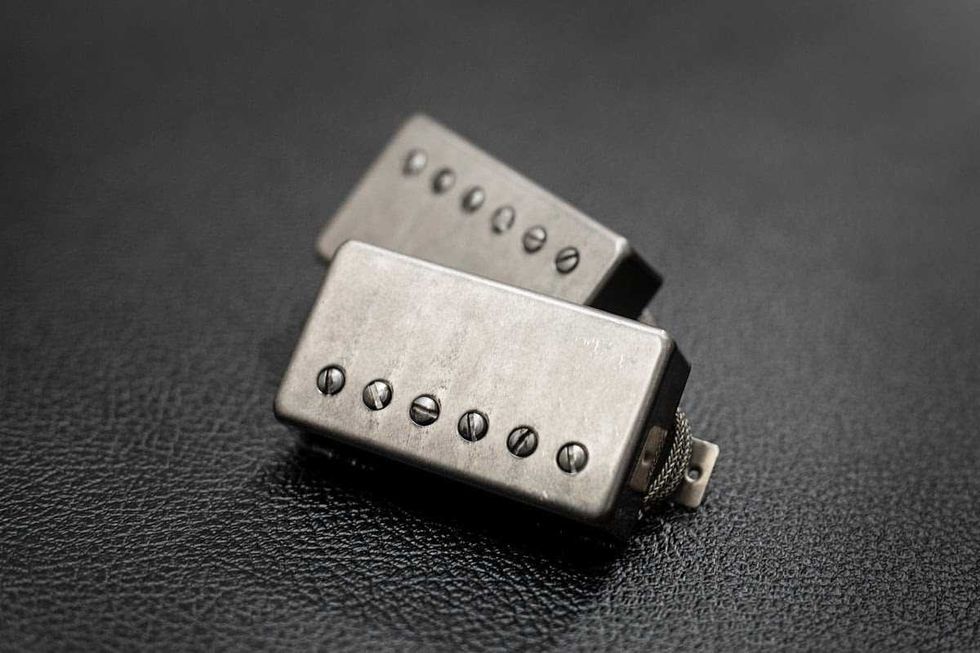
The Seymour Duncan Custom Shop is proud to offer this special pickup set featuring:
- Precisely recreated original 1960 P.A.F. humbuckers analyzed by the Seymour Duncan Custom Shop
- Limited Edition First Run (500 sets) feature signatures from Joe Bonamassa and Seymour W. Duncan
- Alnico 2 Magnets deliver authentic vintage tonality with dynamic bridge and warm neck pickup characteristics
- Custom Aging process matches original pickups' authentic vintage appearance
- A portion of the Proceeds Support Tommy Bolin's Musical Legacy through dedicated endowment and memorial funds
MAP pricing:
Set: $375.00
When Joe met Tommy’s late brother Johnnie, he inquired about a very special 1960 Gibson® Les Paul® that Tommy had played throughout his career. The “Bolin Burst” Les Paul was originally purchased and owned by Tommy’s friend and long-time guitar tech David Brown and became his replacement after his own Les Paul goldtop was stolen at a Zephyr gig. The guitar features a unique American flag pickguard hand-painted by Brown in the early 70s. It was meant to be an American twist on the British Invasion’s Union Jack which was so prevalent in artwork at the time. A Fender-style Bigsby® vibrato was also pulled off a Telecaster® and fixed on the Les Paul at Tommy’s request to better suit his playing style. These modifications aside, it is acknowledged that the fine tone of this instrument came to a great extent from its original pickups: a very special set of P.A.F. humbuckers.
After an extensive 10-year search, Joe was able to locate and purchase this one-of-a-kind guitar from David Brown himself. Admiring the unique sonic qualities of this particular guitar, Joe approached his friends at Seymour Duncan to analyze in detail the P.A.F.s in order to create his newest pickup project. The Seymour Duncan Custom Shop was able to successfully recreate the iconic tone of the “Bolin Burst” pickups and Joe and the Bolin estate are now making them available to everyone.
The Joe Bonamassa “Bolin Burst” Humbucker set utilizes Alnico 2 magnets to replicate the original’s sweet vintage tonality. The bridge pickup provides a dynamic and barky sound, while the neck pickup sings with warmth and clarity - especially through your favorite overdriven amp.
Aged in the Seymour Duncan Custom Shop to match the look of the original pickups, the first 500 sets of the “Bolin Burst” Humbuckers are built with bottom plates signed by Joe and Seymour W. Duncan and are available in limited edition numbered packaging.
A portion of the proceeds from each “Bolin Burst” Humbucker set will be donated to the Tommy Bolin Endowment and Tommy Bolin Memorial Fund.
Nuno Bettencourt Launches Own Guitar Company, Nuno Guitars
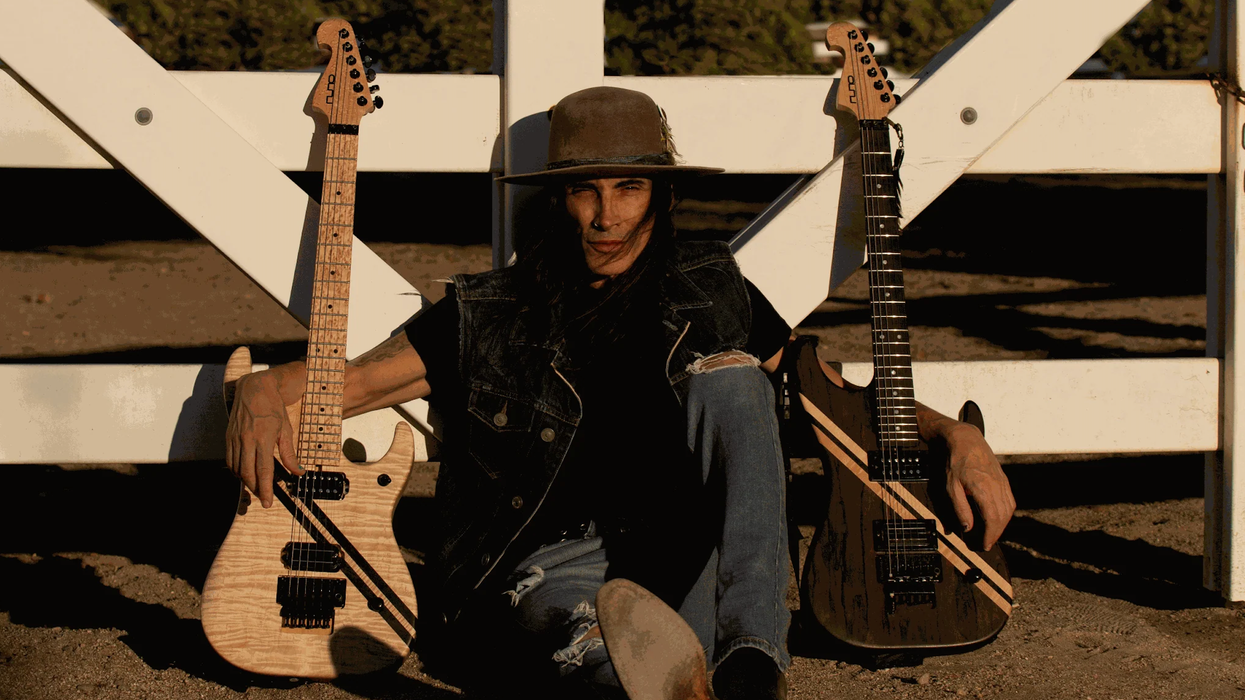
Legendary guitarist Nuno Bettencourt has announced the launch of Nuno Guitars, his own guitar company, marking a new chapter after more than 30 years with Washburn.
"I'm super excited to announce that today, this second, right now as we speak in real time, I'm launching my own guitar company," Bettencourt said in a video post to his official Instagram page. "Had a great run with Washburn, a good 35 years, I believe, which is pretty insane."
The Extreme guitarist emphasized that this move has been years in the making, driven by his desire to connect more intimately with the guitar community. "One of the main reasons is I wanted to be able to kind of deal directly with y'all, with guitar players and fans that purchase any of my guitars," he explained. "I wanted to kind of build this community now and be able to engage with you on a deeper and a closer level."
Serving as both founder and CEO, Bettencourt is launching two new models—the Dark Horse and the White Stallion. These instruments represent what he calls "true workhorses" that reflect the same dedication he brings to his performances.
In a direct-to-consumer approach, the new venture will enable players to purchase the same guitars Nuno uses on stage and in the studio. Bettencourt could recently be seen playing the guitars onstage at Black Sabbath's Back to the Beginning benefit concert at Villa Park in Birmingham and at the 2025 MTV VMAs.
"Once you own a Nuno guitar, you are forever a part of my family," Bettencourt stated.
For more information, you can visit nunoguitars.com, though Bettencourt notes the website is still developing. The company is building everything in real time, with pre-ordering options coming soon.




